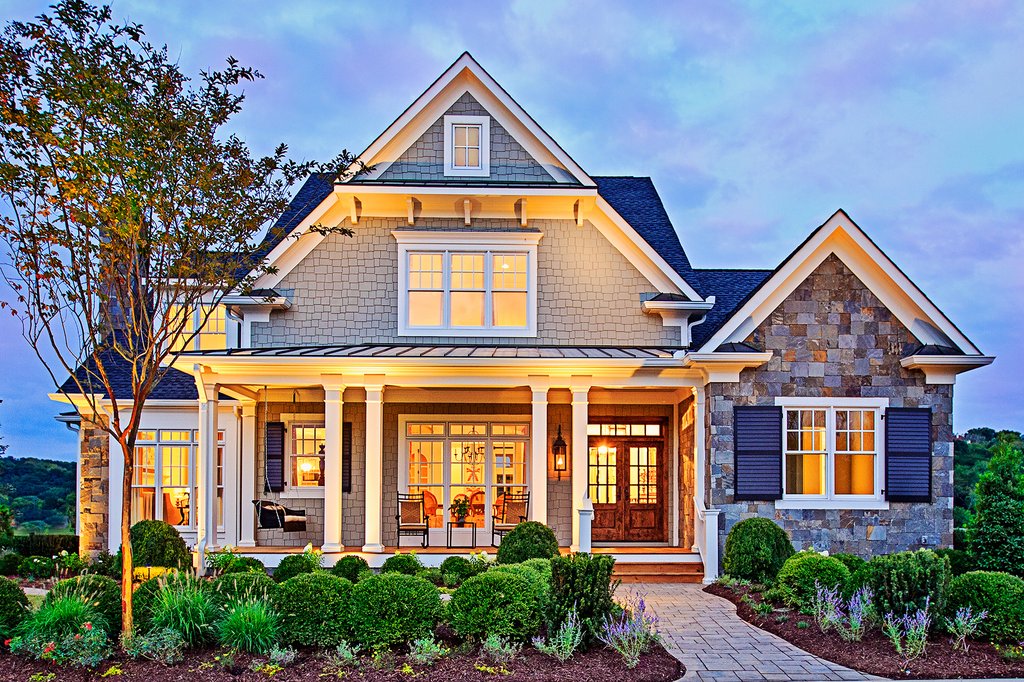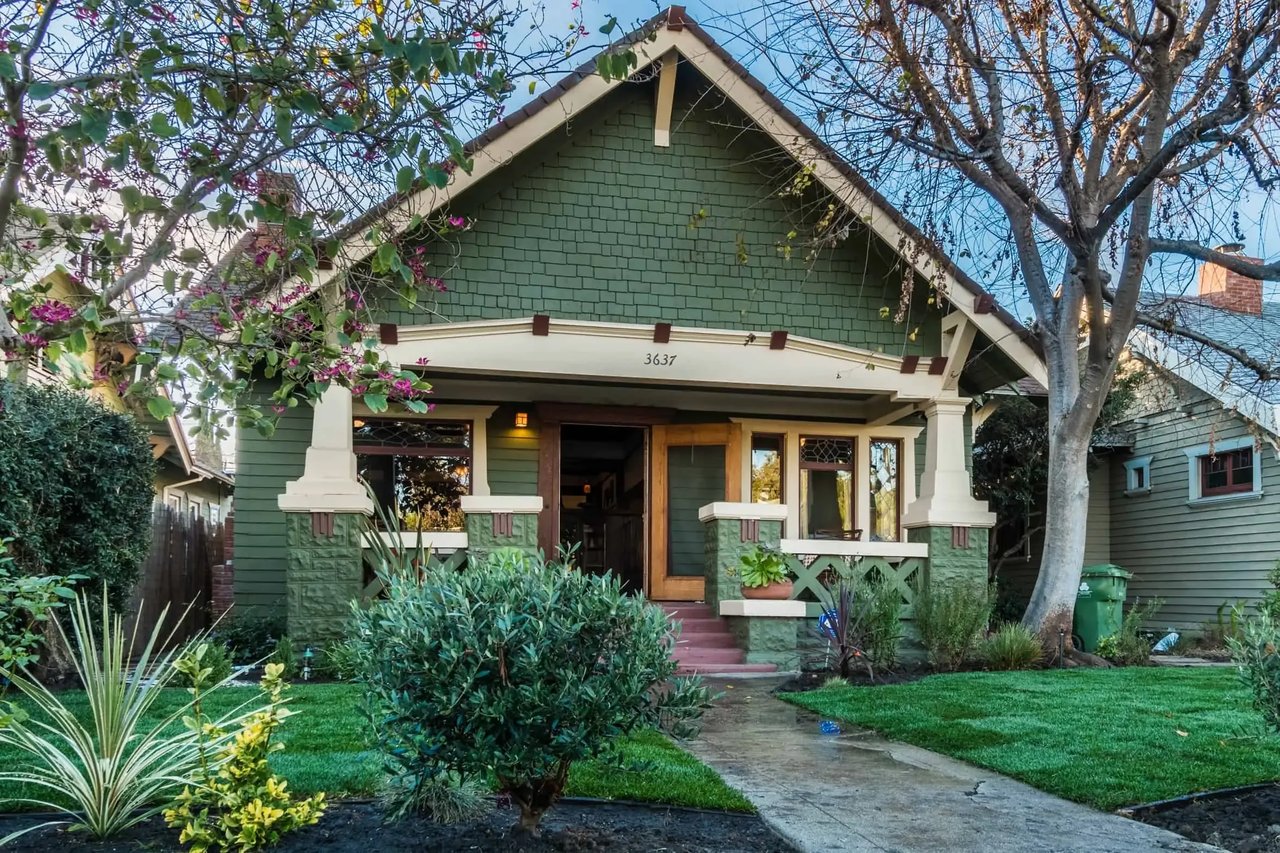The Role of Arts & & Crafts Architects in Elevating Architectural Services in Residential Style
Arts and Crafts architects significantly affect household layout with their dedication to craftsmanship and sustainability. They prioritize handmade information and all-natural products, which improve both visual appeals and area identification. By including clients in the style procedure, these architects produce special space that reverberate with personal tastes. This approach raises inquiries regarding the future trajectory of property architecture and its possible effect on community dynamics. craftsman style house. What exists ahead for this classic style philosophy?

The Principles of Arts and Crafts Architecture
The essence of Arts and Crafts architecture hinges on its commitment to craftsmanship and simpleness. This building activity emerged in the late 19th century as an action to industrialization, stressing the worth of handcrafted details and natural products. The concepts of Arts and Crafts architecture prioritize functionality and harmony with the environment. Frameworks generally feature low-pitched roofs, broad eaves, and exposed rafters, advertising a feeling of unity with nature.
Artisans played a substantial role in this style, frequently integrating ornamental elements like discolored glass, floor tiles, and woodwork, which mirror neighborhood craftsmanship. The color palette has a tendency to be earthy and restrained, permitting structures to blend seamlessly right into their surroundings. In addition, the style encourages open layout and communal areas, promoting a feeling of togetherness. In general, the concepts of Arts and Crafts architecture celebrate the appeal of simplicity and the relevance of human link to both nature and area.

Sustainable Practices in Residential Layout
While the demand for eco accountable living remains to expand, lasting techniques in household layout have acquired considerable grip among architects and property owners alike. Architects are progressively including energy-efficient innovations and sustainable products into their styles, aiming to reduce carbon impacts and improve power conservation. Approaches such as passive solar style, environment-friendly roofs, and rain harvesting systems are becoming standard parts of modern property architecture.
The choice of locally sourced products minimizes transport exhausts and supports regional economic climates. Emphasis on natural light and air flow not only boosts interior air top quality but additionally lowers dependence on fabricated lighting and climate control systems. These lasting methods show a dedication to maintaining the environment while providing house owners with comfortable, effective living areas. As understanding of environmental problems expands, the combination of sustainability in household style is poised to come to be a defining attribute of contemporary architecture, directed by the principles developed by Arts and Crafts architects.
Customization and Customization in Home Style
Customization and customization in home style have browse around this web-site actually become key trends in reaction to the expanding wish for unique living settings that mirror individual tastes and way of livings. Homeowners progressively look for to tailor areas that reverberate with their individualities, causing a more purposeful link with their living rooms. craftsman style house. This movement encourages architects to involve clients in the design procedure, fostering cooperation that assures the final end result embodies the property owner's vision
Elements such as bespoke designs, customized materials, and customized coatings permit a diverse series of expressions in residential style. Arts and Crafts architects play a pivotal duty in this development, stressing workmanship and top quality. Their emphasis on incorporating creative components with capability guarantees that each home is not just visually pleasing yet likewise distinctively fit to the inhabitants' requirements. This emphasis on personalization boosts the overall property experience, creating rooms that are both individual and enduring.
The Influence of Arts and Crafts Architects on Area Aesthetics
As neighborhoods progress, the impact of Arts and Crafts architects significantly forms their aesthetic landscape. By highlighting handcrafted details, all-natural products, and traditional construction techniques, these architects produce homes that reverberate with their dig this environments. Their styles frequently include regional vegetations, appearances, and shades, promoting a feeling of consistency between developed atmospheres and nature.
In addition, the Arts and Crafts activity advertises neighborhood identification through building continuity. By encouraging homeowners to take on similar design principles, communities establish a natural personality that boosts visual appeal. This architectural harmony not just enriches the aesthetic experience but also infuses a sense of pride amongst residents.
Furthermore, the concentrate on sustainability and craftsmanship in Arts and Crafts architecture aligns with contemporary values, making these layouts pertinent in modern setups. Inevitably, Arts and Crafts architects add considerably to the general beauty and social honesty of communities, leaving a long-term influence on their visual legacy.

Future Patterns in Arts and Crafts Architecture
With a boosting focus on sustainability and customization, future patterns in Arts and Crafts architecture are poised to mix conventional craftsmanship with modern-day advancement - craftsman style house. Architects are likely to prioritize green products, making use of reclaimed timber and all-natural stone to boost the sustainability of household designs. The integration of wise home modern technology will certainly end up being prevalent, allowing for individualized living YOURURL.com experiences without compromising visual honesty
Additionally, the rebirth of artisanal methods will certainly foster a renewed gratitude for handmade aspects, such as bespoke kitchen cabinetry and custom ceramic tile job. Future layouts might also show a focus on community-oriented areas, encouraging communication and link amongst citizens. Outside living areas will certainly obtain prominence, flawlessly incorporating nature into the home environment. As Arts and Crafts architecture advances, it will remain to recognize its roots while adapting to contemporary needs, developing harmonious rooms that show specific worths and way of lives.
Regularly Asked Questions
What Inspired the Arts and Crafts Movement in Architecture?
The Arts and Crafts movement in architecture was inspired by a response against automation, emphasizing handcrafted top quality, natural products, and a return to traditional craftsmanship, intending to produce unified, useful spaces that celebrated virtuosity and uniqueness.
How Do Arts and Crafts Architects Collaborate With Customers?
Arts and crafts architects work together with clients through open dialogue, focusing on individual demands and looks. They emphasize craftsmanship and sustainability, cultivating a partnership that integrates the client's vision with the designer's expertise in layout and products.
What Products Are Typically Made Use Of in Arts and Crafts Residences?
Common materials in Arts and Crafts homes include natural wood, stone, and block, stressing workmanship and natural visual appeals. These elements create a cozy, inviting atmosphere, mirroring the activity's devotion to top quality and simpleness in style.
Exactly how Do Arts and Crafts Layouts Improve Indoor Living Spaces?
Arts and Crafts styles boost indoor living rooms by advertising natural light, open layout, and handcrafted details. These components promote a cozy, inviting ambience, encouraging a link in between citizens and their environments with thoughtful, useful aesthetic appeals.
What Are Some Famous Examples of Arts and Crafts Architecture?
Famous examples of Arts and Crafts architecture include the Wager Residence, Greene and Greene's work of art in California, and the Robie Home by Frank Lloyd Wright. These structures showcase handcrafted information and consistency with nature, specifying the activity's essence.